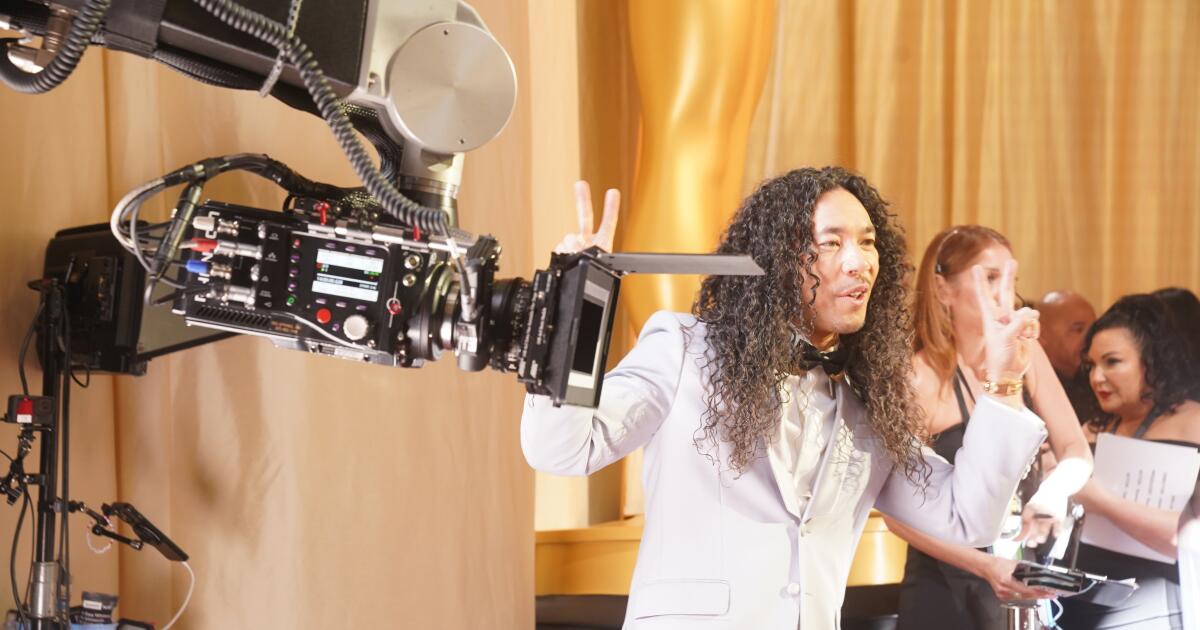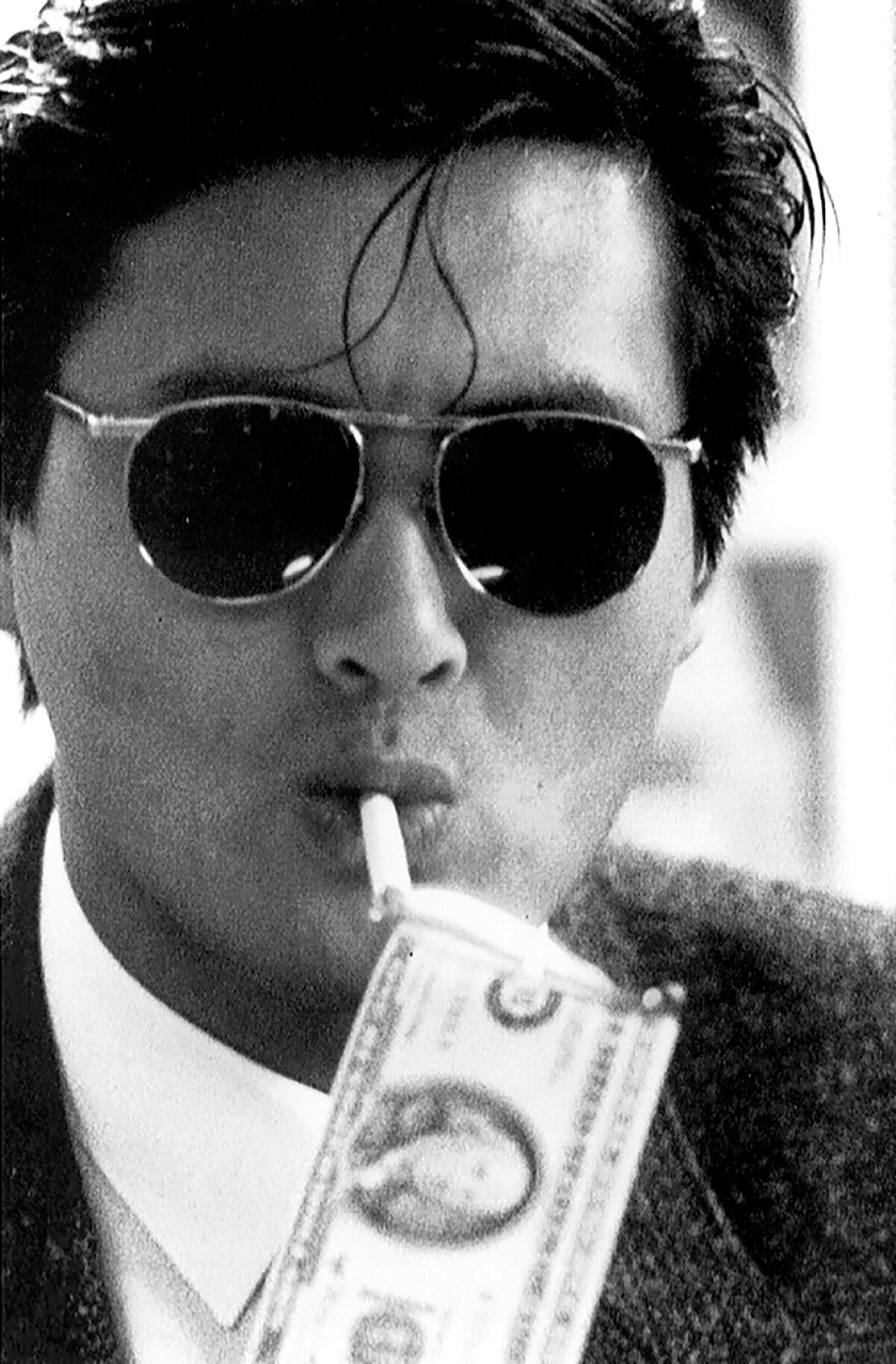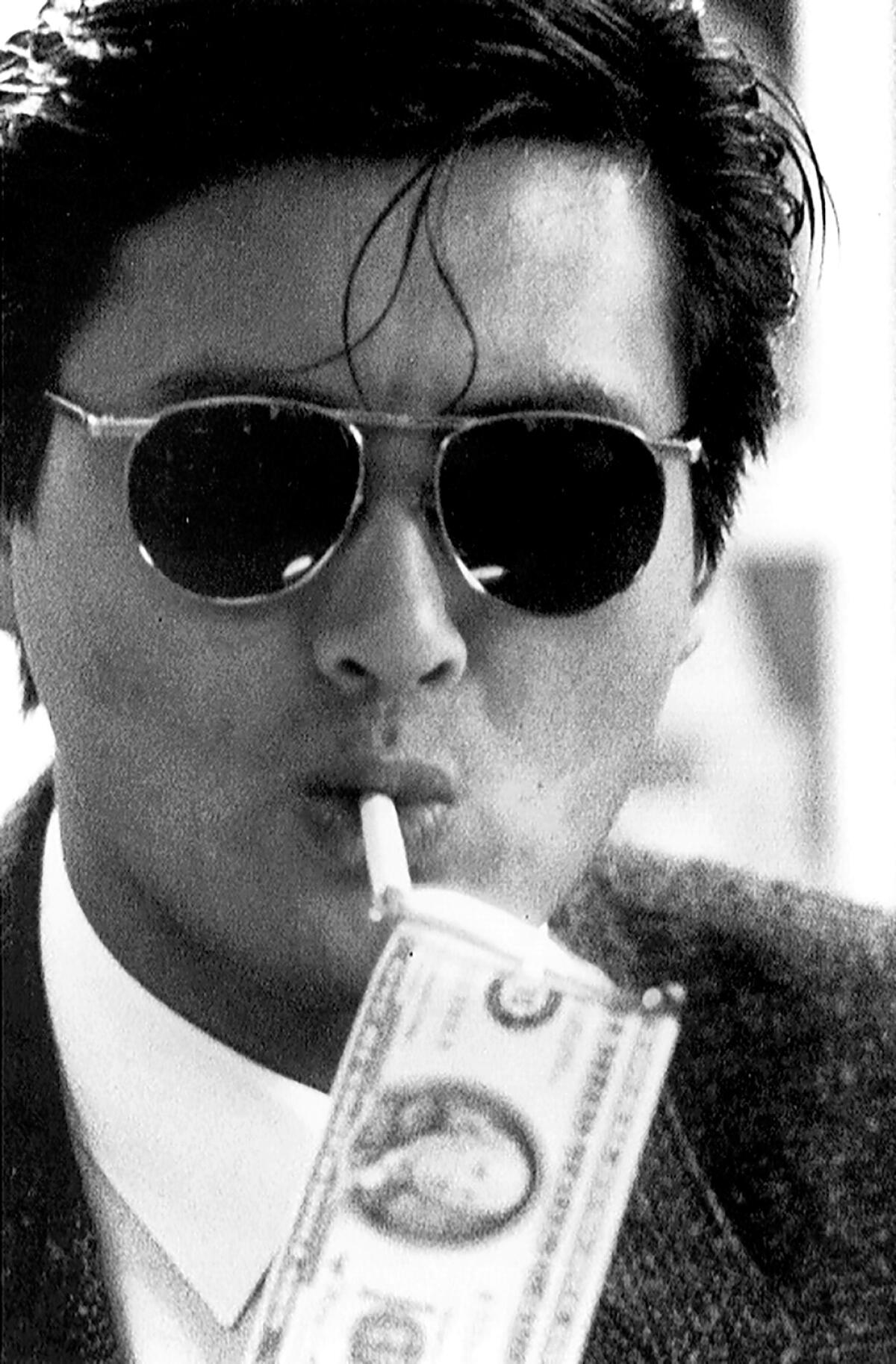Why red carpet Glambot still matters in the age of social media
Jackie Chan wielding panda bear plushies at the 89th Academy Awards. Brad Pitt serving duck face at the 92nd. Anya Taylor-Joy’s otherworldly hair flip just last year. These are some of the most iconic Glambot videos shot by director Cole Walliser, who has been operating E!’s high-speed red carpet camera, a staple of awards season, since 2016.
It was a much different entertainment landscape then, before #MeToo and #AskHerMore, the latter of which Walliser says he’s inoculated from by virtue of the slo-mo clips the Glambot generates. “For better or worse, it doesn’t allow me to ask more!” he chuckles from his Venice Beach office six weeks out from this year’s Emmys, which will be Walliser’s 10th, though he admits he’s ignorant of the nominees. “I try to stay tuned out to who’s nominated and who’s coming because I don’t want to get nervous,” he tells The Envelope.
Walliser, whose résumé includes music videos for Pink, Katy Perry and Tinashe and commercials for CoverGirl cosmetics, saw early on with Glambot that celebrity culture was poised to break out beyond red carpet telecasts and tabloid magazines: “If I look forward five years, what’s the climate going to be?” he recalls thinking. “It was very clear that it was going to be more on socials. So I thought, ‘If I start now I can be [ahead] of the curve.’”
Nor is he concerned about the growing presence of influencers in the awards space, whether in the form of now-regular campaign stops like “Hot Ones” and “Chicken Shop Date” to the red carpet itself. After all, Glambot is the ultimate short-form content, coming in at one second apiece, and helped pave the way for such successors.
“Part of what people gravitate to with the Glambot is the candid [nature of it],” Walliser says. “There’s a barrier that is broken down that people seem to enjoy.”
It took him a few years to arrive at the synergy between slow-motion clips and behind-the-scenes content that gives the Glambot a second life on social media during the six months outside of the awards season churn.
“It happened organically,” Walliser says, when he asked his assistant to be prepared to take a photo of him and Chan, whom Walliser grew up watching in Vancouver, if the opportunity arose. Ultimately, “it didn’t feel right, so I didn’t ask for a picture.” But unknown to Walliser, his assistant had been surreptitiously filming footage of Walliser directing Chan. He asked her to do it a few more times with other big celebrities. “Seeing how it works in real time was kind of interesting, so I cut it together and put it [online].
“It wasn’t until the 2020 awards season that I really dialed into what the behind-the-scenes content would be,” he continues. “Then the pandemic hit, so I was at home editing my footage and putting it on socials, and that’s when it exploded.”
Now the rise of TikTok and influencers has changed celebrities’ relationship with social media and the entertainment ecosystem at large. The Glambot remains, but it jostles for red carpet real estate alongside streamers and indeed celebs themselves, revealing their looks on Instagram or filming “Get Ready With Me” videos for fashion glossies like “Vogue” and “Elle.”
Does Walliser think the Glambot will go the way of “E! News”?
“Until celebrities are doing their at-home Glambots as good as I am on the red carpet, there’s still job security!” he says with a laugh. Still, the collaboration function on Instagram has been a godsend. “There was a switch when [celebrities] started going, ‘How do I get this? I want to post it.’”
Walliser’s employer’s flagship pop culture program was canceled last month after 32 years on the air, which he calls an “entertainment tragedy.” But whether exemplified by media companies’ pivot to video, then back to print, then back to video again, or broadcasting conglomerates’ mergers and spin-offs, Walliser believes the show, or at least the service it performs, could make a comeback.
“I think at some point we’re going to revalue these information curators that we trust and love because there’s too much content to do it on our own,” he says.
In the meantime, Walliser exudes serenity as he warms up for the Emmys before the hectic triple whammy of the Golden Globes, the Grammys and the Academy Awards in the new year: “I don’t have a life until after the Oscars.”
Until then, he’ll be hoping to capture the bold-faced names who’ve so far eluded the Glambot, including Rihanna, Leonardo DiCaprio, Bradley Cooper and Beyoncé. There’s always a chance — Bey’s Christmas Day NFL halftime performance is nominated for four Emmys.
Although Walliser doesn’t know that.



